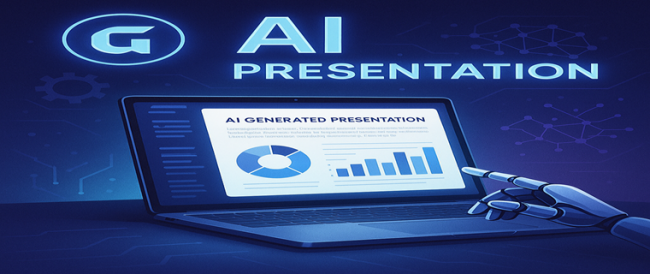In an era when AI headlines feel endless, one partnership stands out — not for the hype, but for the real-world impact it's chasing.
Google and NVIDIA, two of the most influential names in tech, are ramping up their collaboration to make artificial intelligence more accessible, trustworthy, and practical.
Their latest announcements at the NVIDIA GTC 2025 event aren’t just updates —they’re signals of what’s to come for medicine, robotics, energy, and beyond.
Let’s dive into the key areas where this collaboration is making a difference — and why it matters more than ever.
Google Cloud and NVIDIA: Powering the Next Generation of AI Infrastructure
Training powerful AI models isn’t easy — or cheap. It takes cutting-edge GPUs, efficient infrastructure, and the kind of scale only a few companies can manage. That’s where this partnership hits the ground running.
Google Cloud just rolled out its A4 VMs, built on NVIDIA’s HGX B200 GPUs, offering developers significantly faster model training and smoother deployment.
The more advanced A4X VMs, running on the NVIDIA GB200 NVL72, are also on their way, promising even more performance for large-scale AI use cases. And yes, support is already baked in for NVIDIA’s newest Blackwell GPUs — including the RTX PRO 6000 Blackwell and GB300.
Faster infrastructure means less time waiting and more time building. But what will developers build with this kind of power? Let’s move from machines to models.
Bringing Gemini to More Developers Through NVIDIA’s Ecosystem
Google DeepMind’s Gemini model is one of the most powerful AI models available, capable of processing text, images, code, and more with unprecedented depth. But until recently, its full potential wasn’t easily accessible.
_1748941695.png)
Thanks to NVIDIA, that’s changing.
Through this partnership, developers can now tap into Gemma 3 — a lighter, open version of Gemini — and run it efficiently on any NVIDIA GPU, from workstations to data centers. This opens the door to wider AI adoption, allowing smaller teams, researchers, and startups to work with models previously reserved for big labs.
More people building smarter tools leads to better solutions, but with more content being generated, how do we ensure trust?
Strengthening Trust in AI: DeepMind’s Watermarking Tool Lands on NVIDIA’s Platform
As AI-generated content becomes more common, especially in video and multimedia, verifying what's real and what's machine-made is crucial.
In a major move toward responsible AI, NVIDIA announced that its video generation platform, Cosmos, will now integrate Google DeepMind’s SynthID watermarking tool.
This marks the first external deployment of SynthID and shows a serious commitment to content transparency. Now, creators and viewers alike can trust that AI-generated content is labeled appropriately, building a more honest AI ecosystem.
While authenticity is critical, this partnership also aims to tackle another urgent challenge — solving massive real-world problems through applied AI.
Using AI for Good: Tackling Global Challenges Together
The collaboration between Google and NVIDIA isn’t just about performance and transparency — it’s about applying AI to tackle the toughest issues humanity faces. They’re rolling out impactful projects in energy, drug discovery, robotics, and scientific research.
Here’s a quick look at what’s happening:
- Smarter energy systems: Google X’s Tapestry project and NVIDIA are developing faster, more accurate electric grid simulations for better energy forecasting.
- Faster drug development: Isomorphic Labs, Alphabet’s AI pharma startup, is working with NVIDIA to speed up medicine discovery using AI.
- More capable robots: Google’s Intrinsic team is using NVIDIA’s Isaac foundation models to enhance robotic grasping and adaptability.
- Better simulations: DeepMind and NVIDIA launched MuJoCo-Warp, an open-source physics simulator to accelerate robotics research.
It’s a reminder that AI, when applied thoughtfully, isn’t just about automation — it’s about improving lives.
From powering smarter grids to building next-gen robots, this partnership is about purpose, not just performance. So, how do we see this in action?
A Shared Vision of Innovation: What This Means for the Future
What’s truly exciting about this collaboration is the long-term vision. Google brings decades of AI research and cloud infrastructure. NVIDIA brings unmatched accelerated computing and hardware leadership. Together, they’re not just speeding up AI —they’re grounding it in the real world.
They’re betting on a future where AI is useful, accessible, and responsible — where developers everywhere have the tools they need, and industries have the support to adopt AI meaningfully.
And if you're attending GTC 2025, Google Cloud’s booth #914 is where it all comes together — with live demos, expert sessions, and behind-the-scenes access to the future they’re building.
Final Thoughts: The Future of AI Needs More Partnerships Like This
In a world full of moonshots and overnight breakthroughs, this partnership stands out for its grounded impact. It’s not just what Google and NVIDIA are building — it’s how they’re doing it, who they’re enabling, and why it matters now more than ever.
From better infrastructure to more accessible models, from trust in content to solving global crises — the roadmap is bold, but the impact could be transformative.
And if this is only the beginning, the next chapter of AI might just be written by all of us.
Post Comment
Be the first to post comment!


